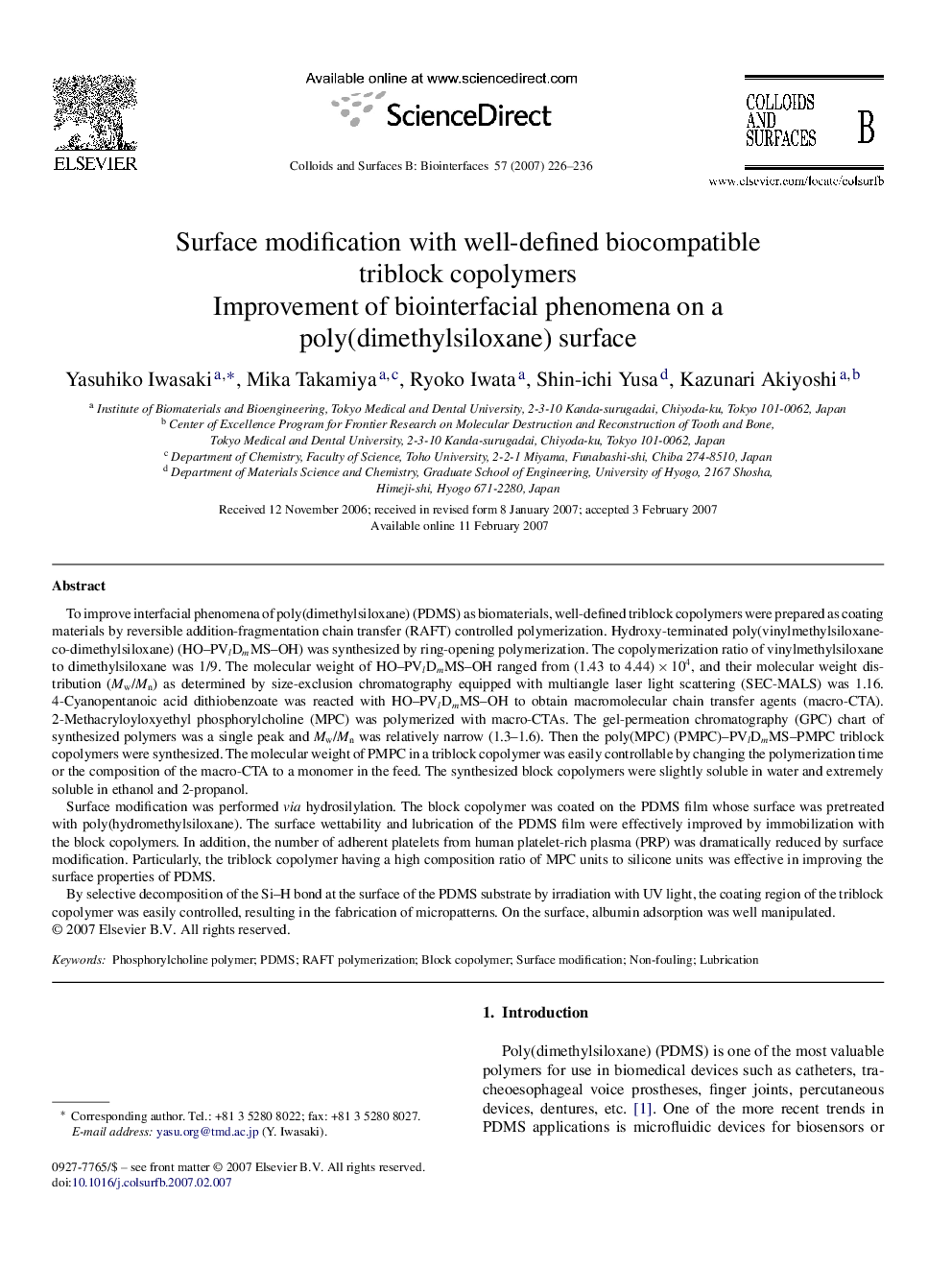| کد مقاله | کد نشریه | سال انتشار | مقاله انگلیسی | نسخه تمام متن |
|---|---|---|---|---|
| 602738 | 879991 | 2007 | 11 صفحه PDF | دانلود رایگان |

To improve interfacial phenomena of poly(dimethylsiloxane) (PDMS) as biomaterials, well-defined triblock copolymers were prepared as coating materials by reversible addition-fragmentation chain transfer (RAFT) controlled polymerization. Hydroxy-terminated poly(vinylmethylsiloxane-co-dimethylsiloxane) (HO–PVlDmMS–OH) was synthesized by ring-opening polymerization. The copolymerization ratio of vinylmethylsiloxane to dimethylsiloxane was 1/9. The molecular weight of HO–PVlDmMS–OH ranged from (1.43 to 4.44) × 104, and their molecular weight distribution (Mw/Mn) as determined by size-exclusion chromatography equipped with multiangle laser light scattering (SEC-MALS) was 1.16. 4-Cyanopentanoic acid dithiobenzoate was reacted with HO–PVlDmMS–OH to obtain macromolecular chain transfer agents (macro-CTA). 2-Methacryloyloxyethyl phosphorylcholine (MPC) was polymerized with macro-CTAs. The gel-permeation chromatography (GPC) chart of synthesized polymers was a single peak and Mw/Mn was relatively narrow (1.3–1.6). Then the poly(MPC) (PMPC)–PVlDmMS–PMPC triblock copolymers were synthesized. The molecular weight of PMPC in a triblock copolymer was easily controllable by changing the polymerization time or the composition of the macro-CTA to a monomer in the feed. The synthesized block copolymers were slightly soluble in water and extremely soluble in ethanol and 2-propanol.Surface modification was performed via hydrosilylation. The block copolymer was coated on the PDMS film whose surface was pretreated with poly(hydromethylsiloxane). The surface wettability and lubrication of the PDMS film were effectively improved by immobilization with the block copolymers. In addition, the number of adherent platelets from human platelet-rich plasma (PRP) was dramatically reduced by surface modification. Particularly, the triblock copolymer having a high composition ratio of MPC units to silicone units was effective in improving the surface properties of PDMS.By selective decomposition of the Si–H bond at the surface of the PDMS substrate by irradiation with UV light, the coating region of the triblock copolymer was easily controlled, resulting in the fabrication of micropatterns. On the surface, albumin adsorption was well manipulated.
Journal: Colloids and Surfaces B: Biointerfaces - Volume 57, Issue 2, 15 June 2007, Pages 226–236